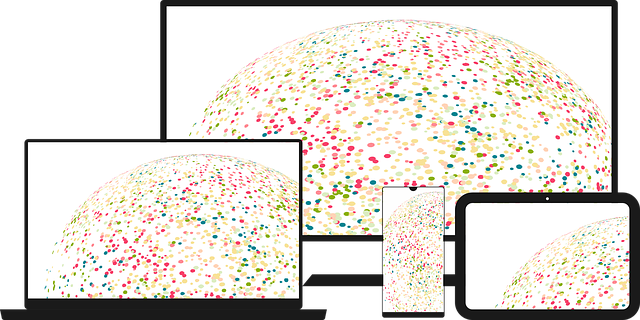AI-based allergy detection tools are transforming allergy management by analyzing data from medical records, wearable devices, and environmental sensors for real-time predictions and personalized medicine. These tools can enhance patient care significantly. Implementing AI chatbots, especially those integrating allergy detection capabilities, requires strategic planning: defining objectives, choosing a platform, designing conversation flows, and ensuring data privacy. Future trends include enhanced voice interaction, sentiment analysis, and integration with business systems. Businesses should prioritize user data security while continuously updating chatbots based on feedback to maintain accuracy and effectiveness.
“Revolutionize your business with AI chatbot implementation services, a game-changer in modern customer service. This article explores the transformative potential of these intelligent assistants, focusing on AI-based allergy detection tools and their numerous benefits. We break down the process step-by-step, offering insights for successful integration.
From understanding the technology to adopting best practices, you’ll discover how these chatbots enhance operations. Uncover future trends shaping the industry, ensuring your business stays ahead in the digital age.”
- Understanding AI-Based Allergy Detection Tools: Benefits and Applications
- The Process of Implementing AI Chatbots for Businesses: Step-by-Step Guide
- Best Practices and Future Trends in AI Business Chatbot Services
Understanding AI-Based Allergy Detection Tools: Benefits and Applications

AI-based allergy detection tools are transforming the way we identify and manage allergies, offering a range of benefits that improve patient care and experience. These advanced systems leverage artificial intelligence algorithms to analyze vast amounts of data from various sources, such as medical records, wearable devices, and environmental sensors. This enables them to recognize patterns indicative of allergic reactions with greater accuracy and speed than traditional methods.
The applications of AI-based allergy detection tools are diverse and impactful. They can predict allergy outbreaks in real time, alerting individuals and healthcare providers to potential triggers. This proactive approach allows for swift action, reducing the severity of allergic responses. Additionally, these tools facilitate personalized medicine by tailoring allergy management plans based on individual health data and environmental factors. This level of customization enhances treatment efficacy and patient satisfaction.
The Process of Implementing AI Chatbots for Businesses: Step-by-Step Guide

Implementing AI chatbots for businesses involves a strategic process that can transform customer interactions and enhance operational efficiency. Here’s a step-by-step guide to help navigate this journey:
1. Define Objectives: Begin by clearly outlining your goals. Are you aiming to improve customer support, streamline sales processes, or offer personalized recommendations? Understanding specific use cases will guide the chatbot’s design and functionality. For instance, businesses utilizing AI-based allergy detection tools can enhance customer service by swiftly providing accurate information about allergen-free products.
2. Choose a Platform and Development Approach: Select an AI chatbot platform that aligns with your business needs. Cloud-based solutions offer scalability and accessibility, while on-premise options provide greater control. Decide on the development approach—building from scratch or leveraging pre-trained models. Customizing a chatbot to handle complex queries, like those requiring allergy-related insights, demands advanced natural language processing capabilities.
3. Design Conversation Flows: Map out conversation scenarios and create flows that guide users through interactions. Consider different user intents and potential responses, ensuring a seamless and intuitive experience. For an AI allergy assistant, this could involve creating flows for symptom checking, product recommendations, and emergency guidance.
4. Integrate Data Sources: Chatbots leverage data to provide accurate answers. Integrate relevant databases, APIs, or existing CRM systems to empower the chatbot with up-to-date information. In the context of AI allergy detection, this could include ingredient lists, customer profiles, and medical records (with privacy considerations).
5. Training and Testing: Train the chatbot using diverse datasets to enhance its understanding capabilities. Test extensively, refining responses and handling edge cases. Utilize user feedback loops to continuously improve performance, ensuring accurate and reliable AI-driven interactions.
Best Practices and Future Trends in AI Business Chatbot Services

As AI business chatbot services continue to evolve, best practices and future trends are shaping the way organizations leverage this technology. One prominent trend is the integration of AI-based allergy detection tools into chatbots. These tools can provide personalized recommendations and real-time alerts for individuals with allergies, ensuring a safe and healthy user experience. By combining natural language processing with medical data analysis, chatbots can offer tailored advice on food choices, medication regimens, and environmental precautions.
Looking ahead, AI chatbots are expected to become more adaptive and contextually aware. Future trends include enhanced voice interaction, better sentiment analysis for emotional support, and increased integration with existing business systems. As chatbot technology advances, businesses should focus on data privacy and security, ensuring that user interactions remain confidential and protected. Additionally, continuous training and updates based on user feedback will be crucial to keep chatbots accurate, relevant, and effective in meeting the diverse needs of users.
AI business chatbot implementation is no longer a futuristic concept but a tangible solution for enhancing customer service and operational efficiency. By leveraging AI-based allergy detection tools, businesses can automate routine tasks, provide 24/7 support, and offer personalized experiences. The step-by-step guide outlined in this article serves as a roadmap for successful integration. As we look ahead, best practices and future trends suggest that AI chatbots will become even more sophisticated, offering advanced natural language processing capabilities and seamless human-machine interactions. Embracing these innovations can set businesses apart, drive growth, and better meet the evolving needs of customers in today’s digital landscape.
